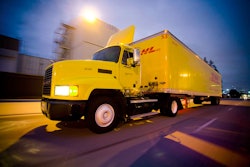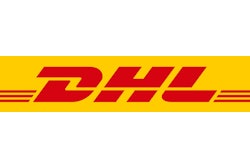
Editor’s Note: The following article is brought to you by DHL Supply Chain in partnership with the Supply Chain Network.
Most consumers and businesses don’t think much about what happens between the time they click “Place Order” and their shipment arrives, often within a day or two. If they did, they would almost certainly be impressed by the complex series of events their click generates and the ability of fulfillment centers and transportation companies to transform that click into a fulfilled order.
But if you work in or manage an e-commerce distribution center, you know how hard this seemingly simple task can be. The reality for supply chain managers is that e-commerce and multi-channel distribution have increased the complexity of distribution exponentially. What looks simple from the outside, is extremely difficult on the inside.
First, there is the inventory challenge. E-commerce has forced retailers to expand their inventories, often straining warehouse capacity. This can also increase fulfillment times as order pickers must navigate more products to find and pull orders. Intelligent slotting strategies can reduce picking times, but these can be difficult to maintain as demand for products shifts. Organizations supporting multi-channel distribution face the additional challenge of managing inventory and transportation across channels.
The steady upward trajectory of e-commerce is putting a strain on existing resources and forcing companies to consider significant new investments in the face of an uncertain future. At the same time, demand on a week-to-week basis can be volatile, stretching scarce human resources to the breaking point and reducing customer service. E-commerce fulfillment must be able to both flex with short-term fluctuations and scale with sustained growth. Few supply chains can meet those dual requirements.
Then, there is the speed at which orders must be fulfilled. With customers increasingly expecting faster delivery, orders must be pulled and shipped the same day they are received—the faster the better. Sophisticated e-commerce operations can now accept orders until 8:00 pm for standard delivery, setting that expectation for all e-commerce customers.
If all that wasn’t enough, fulfillment organizations must also consider the impact of urbanization on their networks. In a survey of 200 transportation decision makers conducted in 2018 and summarized in the report “The Logistics Transport Evolution: The Road Ahead”, urbanization was the biggest concern for participants. They stated that issues inherent in urbanization such as congestion, tolls for entering urban areas during peak business times and environmental concerns regarding transportation’s carbon footprint will have a significant impact upon their business.
Failing to address any of these challenges can constrain e-commerce growth. Alternately, mastering them can create competitive differentiation, open new markets and increase profitability. That requires a combination of experience, expertise and vision.
While emerging today as a mainstream driver of business growth, e-commerce has played a significant role in some supply chains for the last 15 years. Over that time, organizations such as DHL Supply Chain have gained deep experience in managing e-commerce fulfillment while simultaneously building out extensive distribution networks designed specifically for it. The ready availability of these flexible networks, based on a strategic approach to network and process design, allows organizations to flex with changing demand while minimizing infrastructure costs.
That experience also breeds expertise, which in the case of DHL Supply Chain is anchored in the company’s position as the world’s largest contract logistics organization with a track record of operational excellence. Expertise in e-commerce fulfillment processes, supplemented by proven labor management solutions, enables e-commerce organizations to cut delivery times and maximize service levels.
Finally, succeeding in e-commerce fulfillment requires vision. How will customer expectations change in the future and how can fulfillment networks best adapt to those changes? What emerging technologies will be most effective at predicting demand, increasing efficiency and reducing dependence on human labor? If you’re scrambling to stay ahead of the next batch of orders, you have little time to address important questions such as these.
That’s why working with a third-party logistics provider such as DHL Supply Chain is often the best solution for organizations struggling with the complexity e-commerce introduces into the supply chain. With scalable capacity, optimization processes, proven labor management solutions and smart use of emerging technologies, DHL Supply Chain can reduce order cycle times, minimize infrastructure costs and maximize service levels. That not only simplifies e-commerce management, it creates the opportunity to accelerate e-commerce growth.
For more information on DHL e-commerce fulfillment services, click here.















